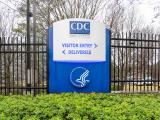In its annual snapshot of funding for public health, Trust for America's Health (TFAH) said the core budget of the US Centers for Disease Control and Prevention (CDC) has declined more than $580 million since 2010, while state support for public health has remained relatively level over the same period.
The nonprofit health advocacy group, based in Washington, DC, said federal funding is poised to take another hit, with President Donald Trump's proposed budget that cuts the US Department of Health and Human Services (HHS) by 18%. According to TFAH, budget sequestration slated for the 2018 fiscal year would put nondefense spending, including for the CDC, below 2010 spending levels, adjusted for inflation.
Increasing vulnerability
John Auerbach, president and chief executive officer of TFAH, said in a statement today that it's painfully clear that the drop in federal spending has not led to higher state spending for public health. "Rather, the nation has doubled down on cuts at both levels, leaving us vulnerable to the next public health crisis. Cutting public health programs is shortsighted—and we will all pay the price over time."
TFAH's report said about 75% of the CDC's funds support state and local programs, though the level varies based on competitive grant awards and targeted-need programs. Support ranges from $15.39 per person in Virginia to $49.67 per person in Alaska.
Except for short-term funding for Ebola and Zika responses, the Public Health Emergency Preparedness (PHEP) core funding for state and local governments, established in the wake of the 9/11 and anthrax attacks, has been cut more than one third each year since it began. TFAH said the CDC has responded to more than 750 emergencies in the past 2 years.
Investing in proven public health strategies can yield health benefits and cost savings, TFAH said, such as reducing the $120 billion spent each year on preventable infectious diseases.
Alongside its funding assessment, TFAH made key recommendations for modernizing the public health system, including, for example, increasing funding at all governmental levels, upgrading the system to address critical infrastructure gaps and outdated systems and technologies, and creating a standing Public Health Emergency Fund to use when new threats emerge.
'Devastating' cuts
Several public health groups have called Trump's proposed cuts to HHS, which include eliminating 20% of the National Institutes of Health budget, devastating. The president's spending blueprint contained few details, but it did include the creation of a Federal Emergency Response Fund administered by the CDC.
It also preserved funding for US Department of Agriculture food safety programs and research and included commitments to Gavi, the Vaccine Alliance.
Amid several health and science positions still unfilled in the Trump administration, a bipartisan group of lawmakers last week sent a letter to Trump asking for continued support for a comprehensive response across US government agencies to address the Zika virus threat.
See also:
Apr 13 TFAH press release
Apr 13 TFAH report
Mar 16 CIDRAP News story "Trump's budget cuts 20% of NIH; groups express outrage"
Apr 6 CIDRAP News scan "Bipartisan group asks Trump to continue support for Zika battle"





















